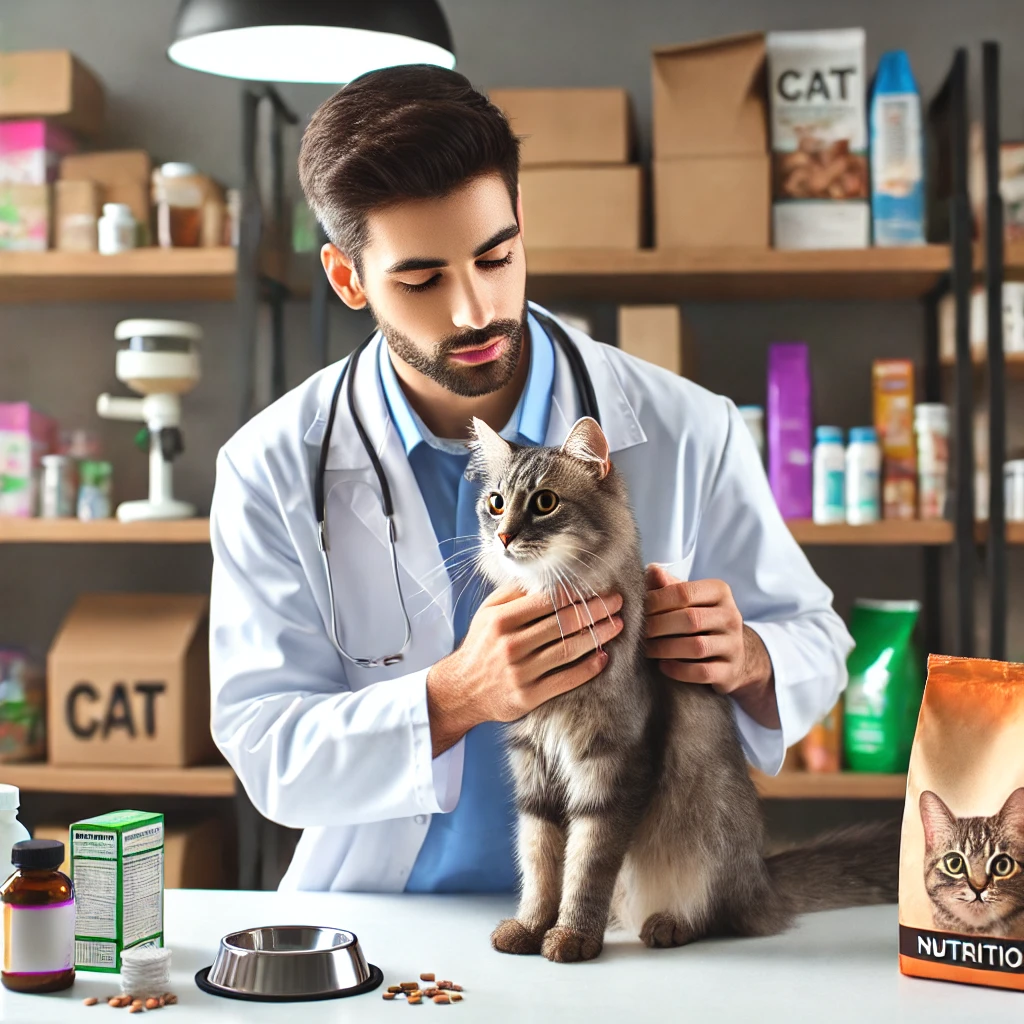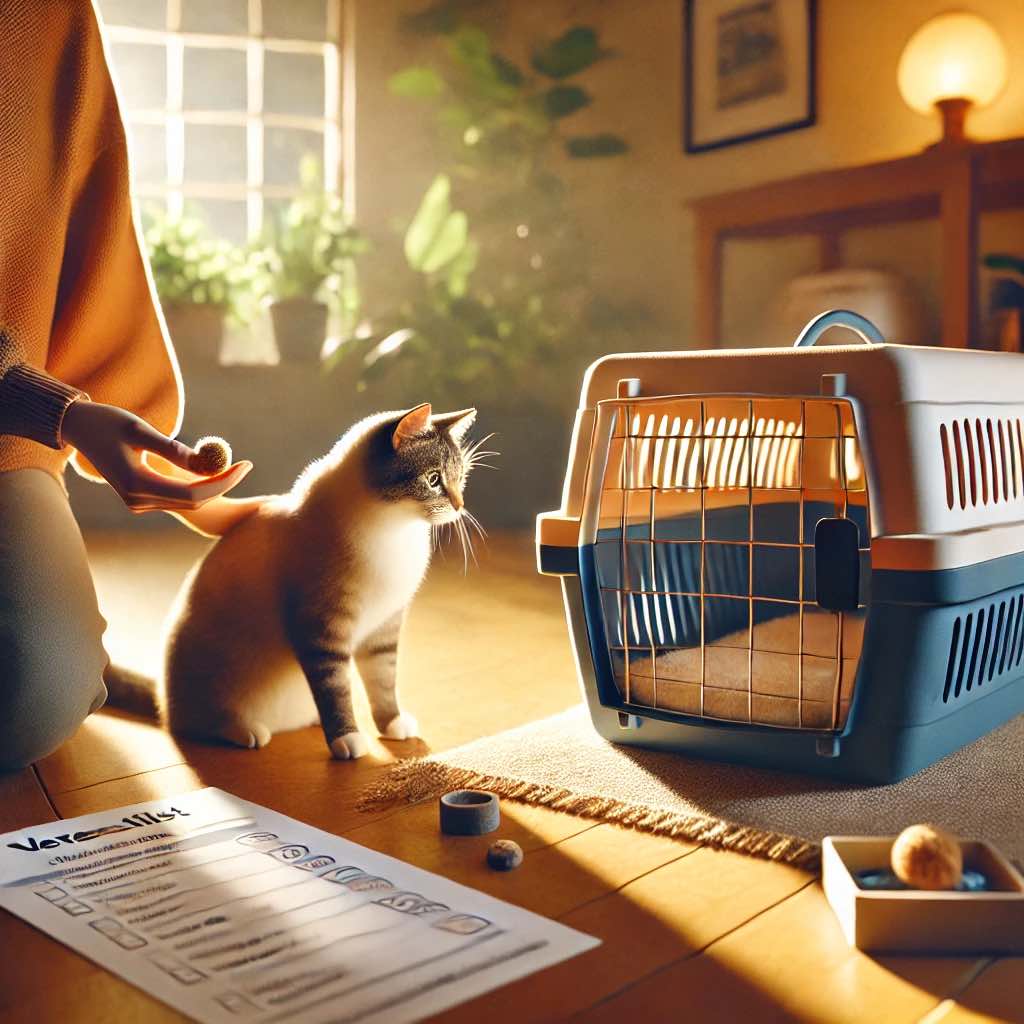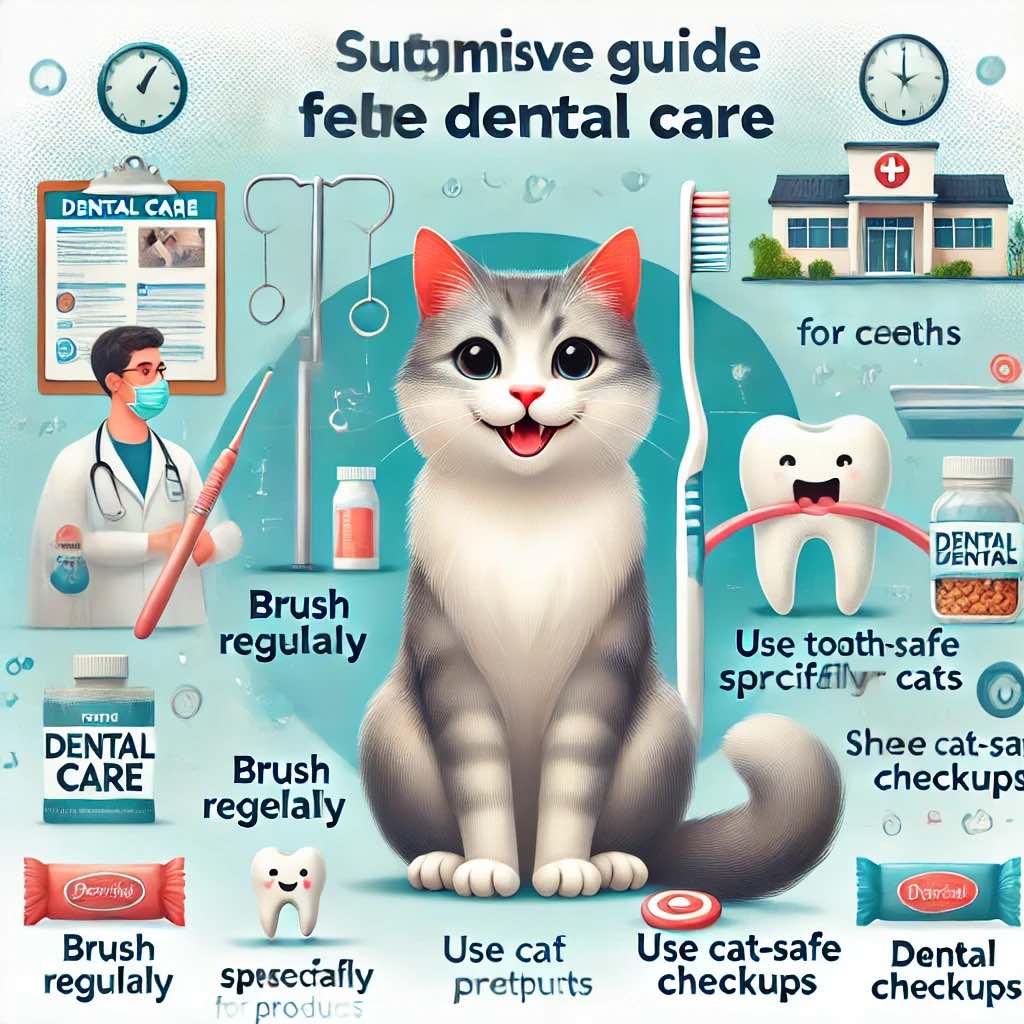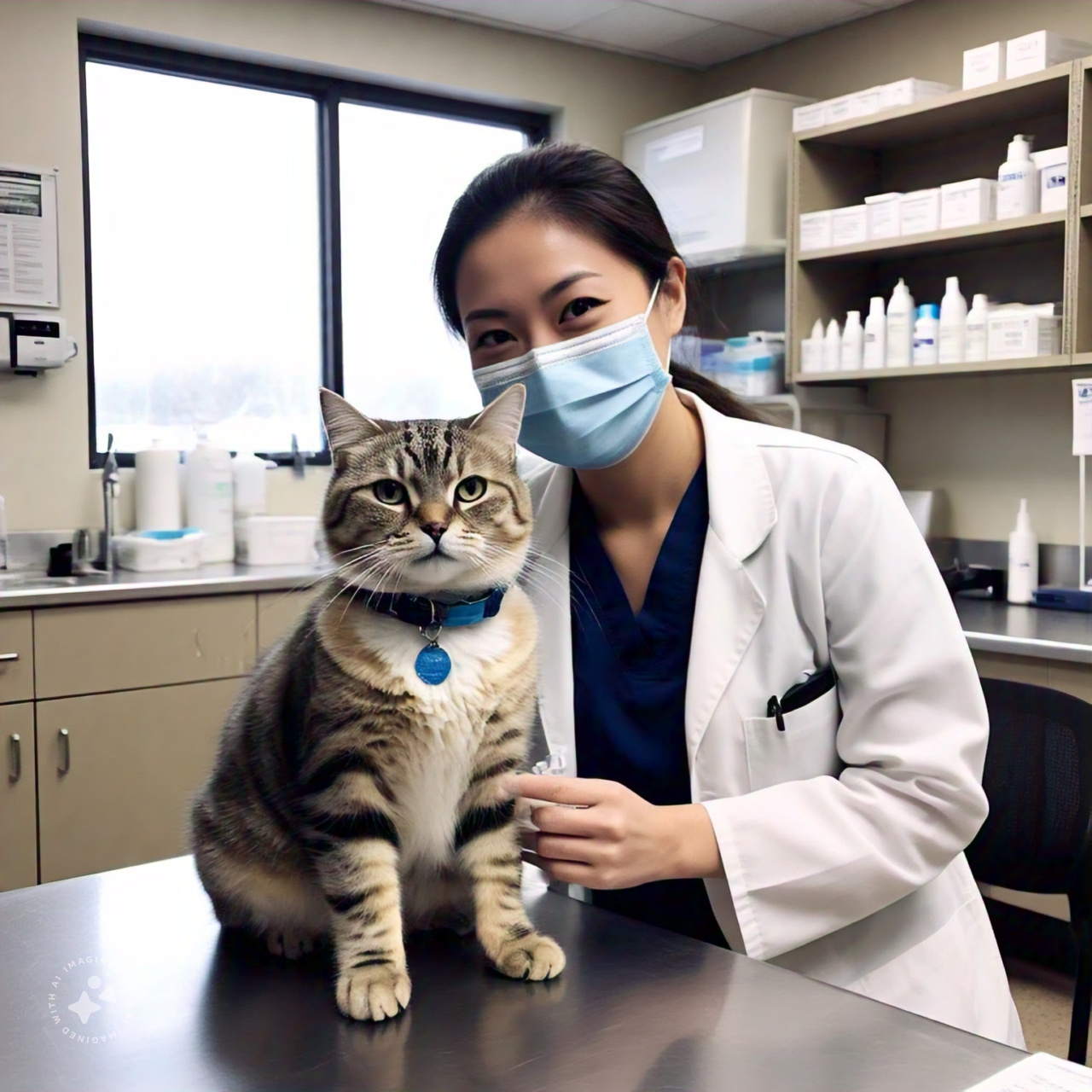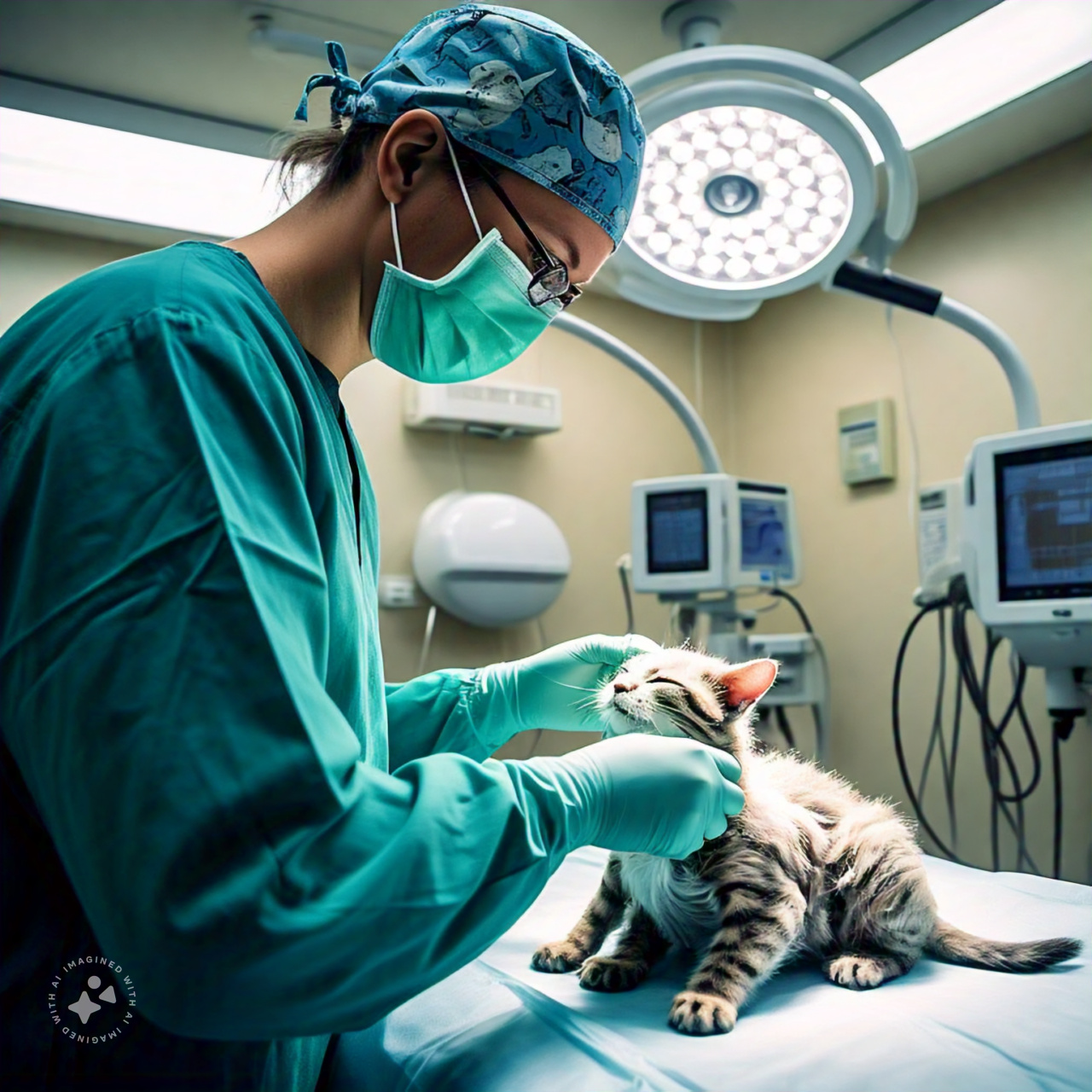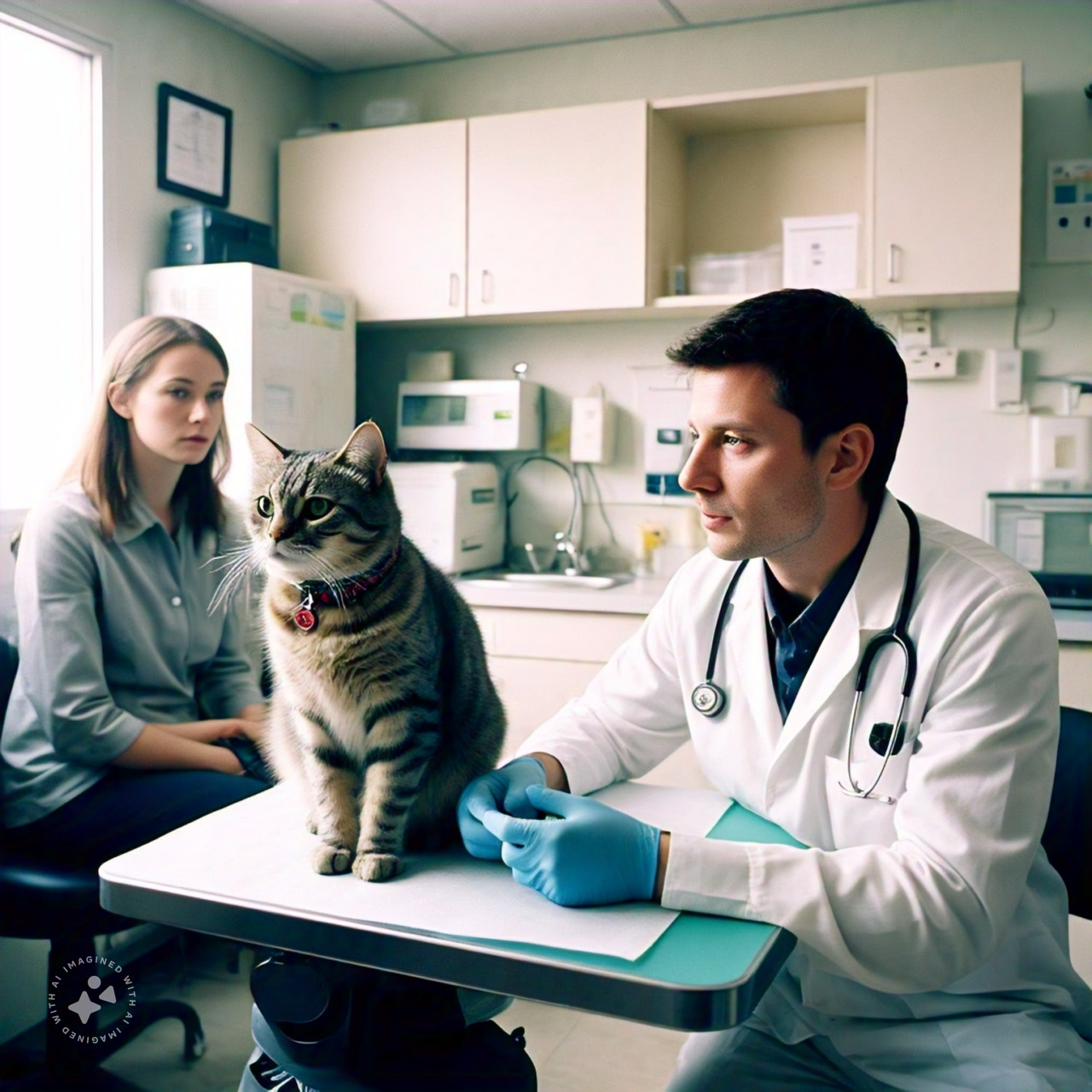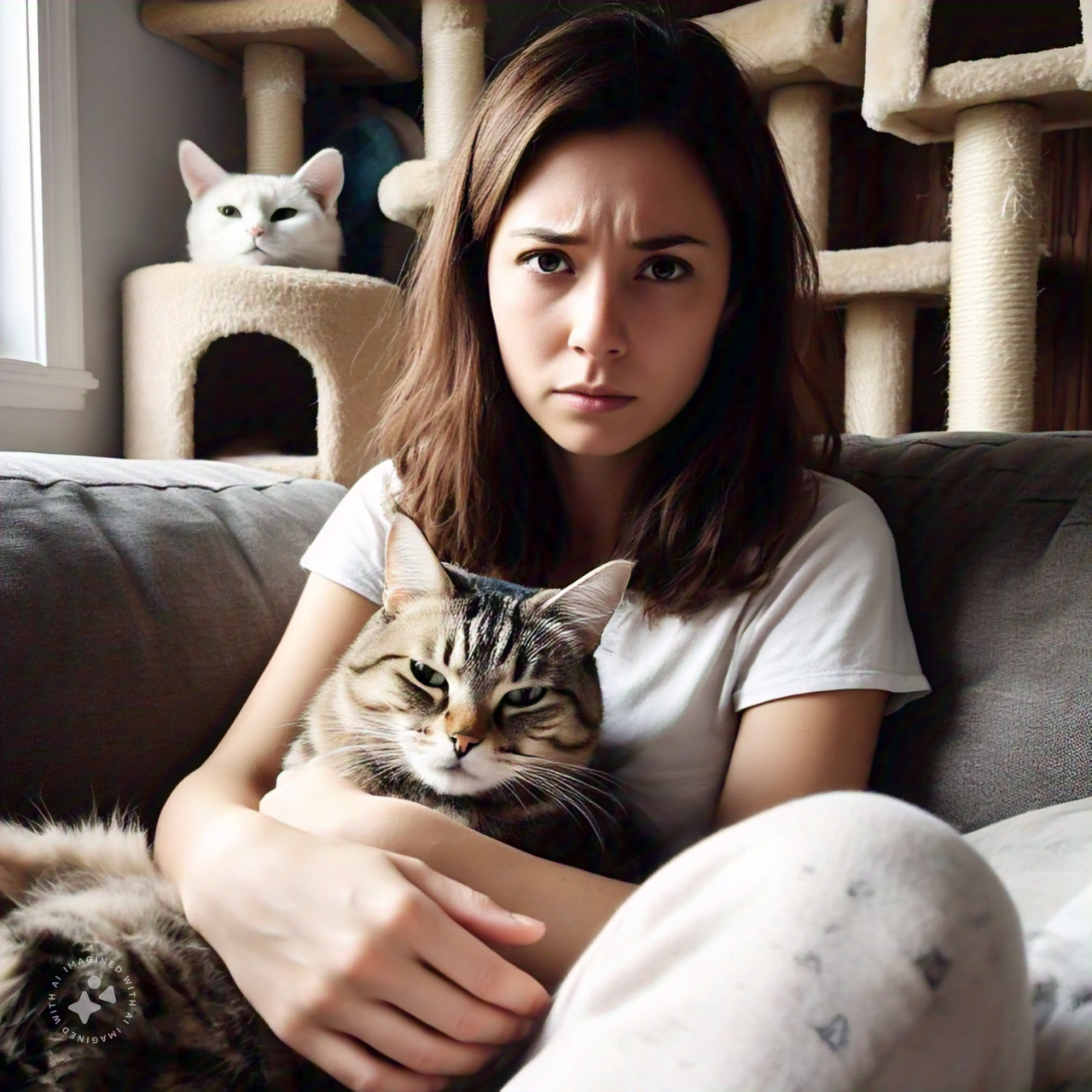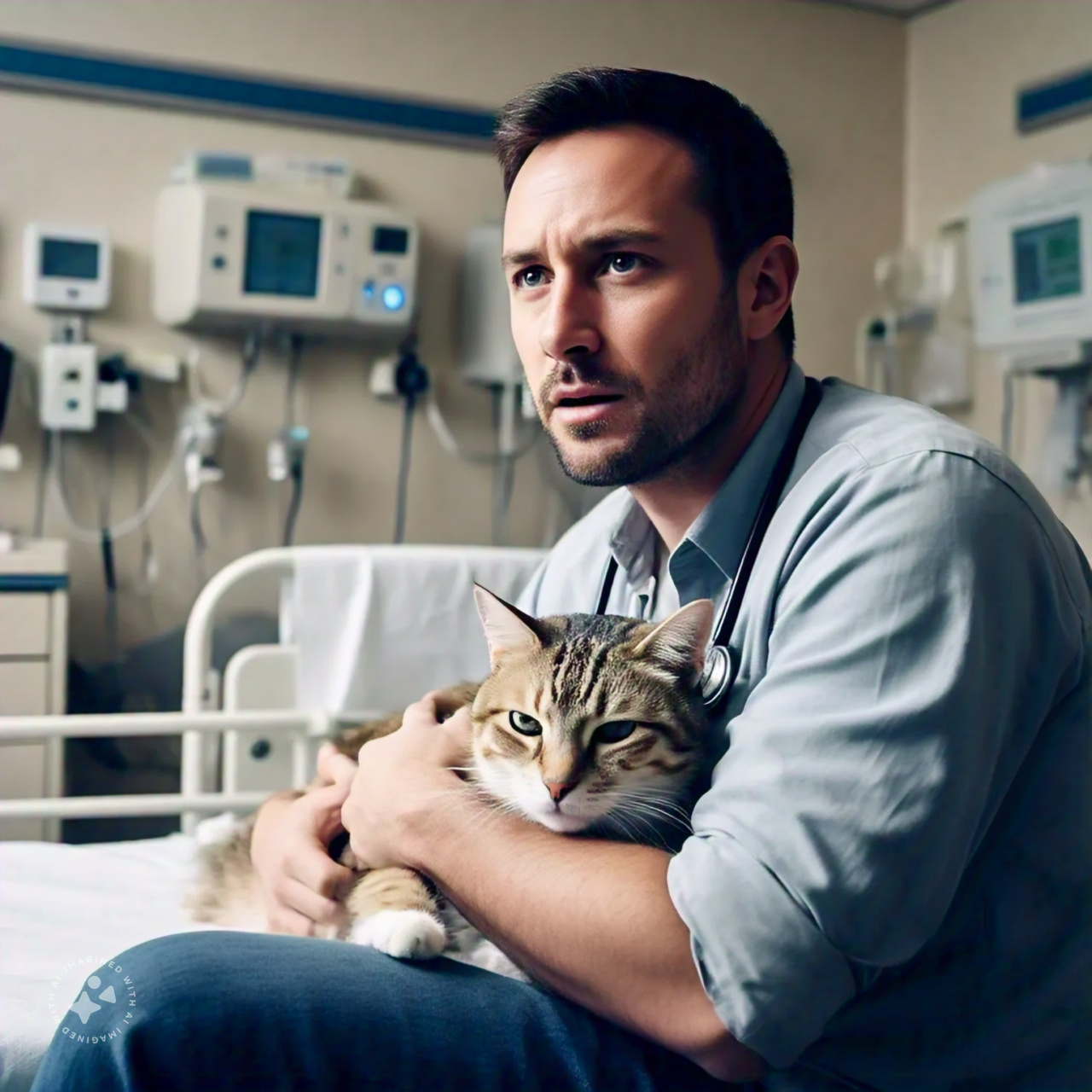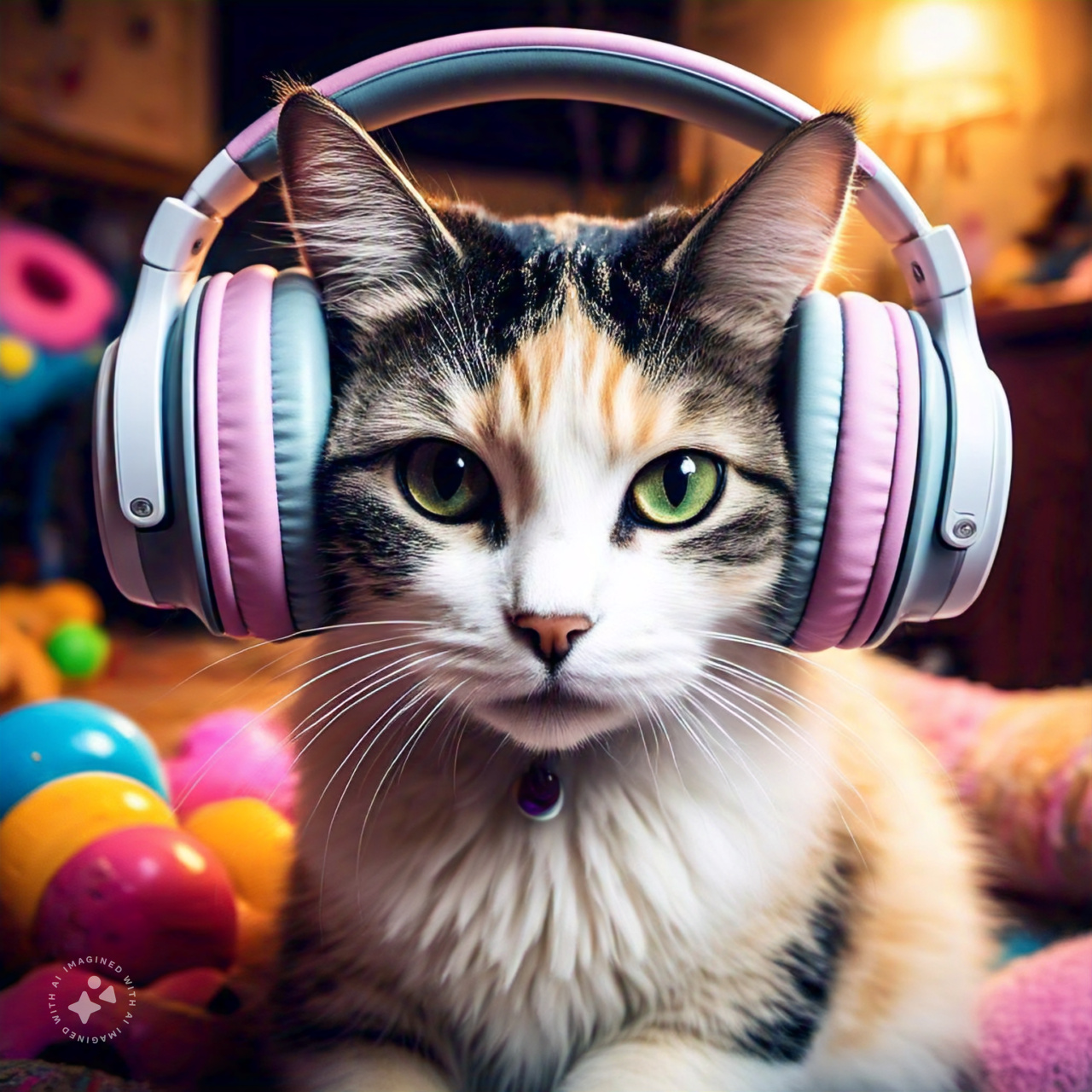The Role of Diet in Your Cat’s Health: Insights from Veterinarians
Understanding the Importance of a Balanced Diet for Cats
A balanced diet is one of the most critical factors in maintaining a cat’s overall health and well-being. Veterinarians consistently stress the significance of proper nutrition to prevent a variety of health conditions that can arise when a cat’s diet is not properly managed. Cats are obligate carnivores, meaning that their nutritional needs are vastly different from those of humans or even other pets. Understanding these dietary needs is essential in helping pet owners make the best choices for their feline companions.
Cats require a high-protein diet, which serves as the foundation for their energy and growth. Unlike omnivores, cats cannot synthesize all the nutrients they need from plant-based foods. Therefore, a protein-rich diet that includes adequate amounts of meat, such as chicken, beef, or fish, is necessary for proper health. These proteins provide amino acids like taurine, which are crucial for maintaining good vision, a healthy heart, and optimal digestion.
Additionally, fat is a vital part of a cat’s diet, offering energy and helping to absorb certain vitamins. Omega-3 and omega-6 fatty acids, for example, contribute to a healthy coat and skin. These fats are especially important for older cats or those with specific health issues, such as skin disorders or joint problems.
Despite their need for protein and fat, cats also need carbohydrates, although in lesser amounts than humans or dogs. Cats use carbohydrates mainly for energy, but they are not as efficient at digesting and metabolizing them as other animals. This is why their food should contain a limited amount of carbohydrates, mostly from high-quality sources like vegetables, grains, or legumes.
For cat owners, understanding the specific needs of their pets is essential in choosing the right food. However, dietary recommendations vary depending on the age, activity level, and health status of the cat. For example, a kitten’s diet will differ greatly from that of an adult cat or senior cat. Kittens require more protein and calories to fuel their rapid growth, while senior cats may benefit from a diet lower in calories to prevent obesity and other health problems.
Veterinarians often highlight the significance of age-appropriate diets because the nutritional requirements of cats change as they mature. Kitten food is typically richer in protein and fat to support growth, while adult cat food is more balanced to maintain their current weight and activity levels. As cats age, their metabolism may slow down, necessitating adjustments in their food to ensure they are getting the right amount of nutrients without excess calories that could lead to weight gain.
Furthermore, the method of feeding also plays a role in the effectiveness of a cat’s diet. Cats are obligate carnivores, and in the wild, their diet consists primarily of small prey animals, which they catch and eat whole. This instinctual behavior is important to consider when selecting food for domestic cats. Dry food, although convenient, can sometimes lack the moisture content that cats need to stay hydrated, especially if they are not drinking enough water on their own. Wet food, on the other hand, provides much-needed moisture and is often more palatable to cats.
A common misconception about feeding cats is that all commercial cat food is equally nutritious, but this is far from the truth. Just as with human food, the quality of ingredients in cat food can vary significantly. Pet owners should choose food that lists animal-based proteins as the first ingredient and is free from unnecessary fillers, such as artificial preservatives or additives. The presence of whole meats, such as chicken, turkey, or fish, ensures that the cat is receiving the proper amount of protein, while also providing essential fatty acids and vitamins.
Veterinarians advise pet owners to be cautious of feeding their cats human food, especially in large quantities. Although some foods like cooked chicken or turkey can be safe in moderation, many human foods contain ingredients that can be harmful to cats. Foods like chocolate, onions, garlic, grapes, and certain artificial sweeteners can be toxic to felines. Additionally, feeding cats raw meat carries the risk of bacterial contamination, which can lead to severe infections.
In addition to the main nutrients, vitamins and minerals are crucial for maintaining a cat’s health. For instance, calcium and phosphorus are important for strong bones and teeth, while vitamins A, D, and E support immune function, vision, and skin health. Cats are also known to require more vitamin A than other animals, as they are unable to convert beta-carotene from plant foods into vitamin A.
Another aspect to consider when feeding cats is the importance of managing food allergies or sensitivities. Some cats may have sensitivities to certain proteins or grains, which can cause gastrointestinal issues or skin problems. In these cases, veterinarians may recommend a hypoallergenic diet that excludes common allergens. It’s important for owners to consult their veterinarian if they suspect their cat has food allergies to ensure proper diagnosis and treatment.
Ultimately, the role of diet in a cat’s health is multi-faceted, affecting everything from energy levels to coat condition and even longevity. Veterinarians play a crucial role in guiding pet owners through the complex world of feline nutrition. By providing expert advice, they help ensure that cats receive the proper balance of nutrients for their unique needs, leading to a healthier, happier life.
Nutritional Needs Across Different Life Stages
As cats progress through different stages of life, their nutritional needs evolve significantly. Veterinarians emphasize the importance of providing age-appropriate diets that cater to the unique challenges and requirements of each life stage. From the early days of kittenhood to the more relaxed period of adulthood and the gradual aging process into senior years, each phase demands a specialized approach to diet. Understanding these changes is essential for cat owners to support their pet’s health, longevity, and overall quality of life.
Kittenhood: The Critical Growth Period
Kittens, especially during their first year, experience rapid growth and development, which places a heavy demand on their nutrition. This period is critical in establishing a foundation for lifelong health. Kittens require more protein, fat, and calories than adult cats to support their developing bodies, muscles, and immune systems.
During this phase, the body of a kitten is growing quickly, and so it needs nutrient-dense food to fuel this development. Protein is paramount, as it provides the amino acids necessary for muscle growth and tissue repair. Taurine, an essential amino acid found in animal-based proteins, is particularly important for kittens, as it aids in the development of the heart, eyes, and brain.
Fat is another essential component of a kitten’s diet. It provides the energy needed to sustain their high activity levels, especially as they explore their surroundings. Furthermore, fat helps with the absorption of fat-soluble vitamins, such as vitamins A, D, E, and K, which are essential for a kitten’s overall growth and immune system function.
Because kittens are growing at such a rapid rate, they require higher levels of calories compared to adult cats. A higher-calorie diet ensures that they have the energy needed to grow, play, and learn. Most commercially available kitten foods are formulated to meet these increased caloric needs, and veterinarians often recommend that kittens be fed multiple small meals throughout the day to provide them with a consistent supply of nutrients.
Kittens also need a high moisture content in their diet, as hydration is critical during this stage of development. Many veterinarians recommend offering both wet and dry food to ensure that kittens are getting the right balance of nutrients and hydration. Wet food, which contains a higher water content, helps prevent dehydration and supports kidney health, which is especially important in growing kittens.
Adulthood: Maintaining Health and Preventing Obesity
As cats transition into adulthood, their metabolism slows down, and their nutritional requirements change. During adulthood, maintaining a healthy weight becomes a primary concern, as obesity can lead to a variety of health issues, including diabetes, joint problems, and heart disease. At this stage, it’s important to provide a balanced diet that supports their activity levels without contributing to excessive weight gain.
Adult cats still require a diet rich in protein, as this macronutrient is essential for maintaining lean muscle mass. However, the total caloric intake should be carefully managed to avoid overfeeding. If a cat is relatively sedentary, such as an indoor cat with limited activity, their caloric needs may be lower than that of an active cat that regularly plays or goes outside.
Veterinarians typically advise adult cats to be fed twice daily to help regulate their calorie intake. Providing controlled portions at each meal can help prevent overeating, especially when cats are not given free access to food throughout the day. The quality of the food is also crucial. Foods rich in animal-based proteins, with a focus on high-quality meats like chicken, turkey, and fish, will help keep the cat satisfied and prevent overeating.
One of the most common health concerns for adult cats is obesity, which can lead to a variety of long-term health problems. Overweight cats are at an increased risk of developing diabetes, heart disease, and even arthritis. A veterinarian may suggest adjusting the cat’s food to a lower-calorie formula if the cat is gaining weight. These diets typically contain less fat but still provide all the essential nutrients a cat needs.
Hydration remains important throughout adulthood, especially since some cats are prone to urinary tract issues or kidney disease as they age. Encouraging a cat to drink more water by offering wet food or a cat water fountain can support healthy kidney function and prevent urinary tract infections, which are common in adult cats.
Senior Cats: Special Considerations for Older Pets
Senior cats, typically those over the age of seven, face unique dietary challenges. As cats age, their metabolism continues to slow, and they may become less active, which can lead to weight gain if their diet is not adjusted accordingly. At the same time, older cats are more susceptible to chronic health issues such as kidney disease, arthritis, and dental problems. A veterinarian can help identify these issues early and recommend dietary modifications that can improve the cat’s quality of life.
One of the most important aspects of a senior cat’s diet is supporting kidney health. Cats are prone to kidney disease as they age, and managing their diet can play a key role in slowing the progression of this condition. Senior cat foods are often formulated with lower phosphorus levels, as high phosphorus intake can exacerbate kidney problems. These foods may also include added omega-3 fatty acids from fish oil, which have anti-inflammatory properties and can help maintain kidney function.
Arthritis is another common issue in senior cats, and certain ingredients in their food, such as glucosamine and chondroitin, can help support joint health. Veterinarians often recommend senior diets that are rich in these compounds to keep joints flexible and reduce the pain associated with arthritis. Additionally, keeping the cat at a healthy weight is critical, as excess weight puts added strain on the joints and can make arthritis symptoms worse.
Senior cats may also experience dental problems, such as tooth decay or gum disease, which can impact their ability to eat dry food. Cats with dental issues may benefit from a diet of softer, wet food, which is easier to chew and digest. If a cat is reluctant to eat due to dental pain, a veterinarian may recommend specific treatments or dental diets to help manage these issues.
Finally, senior cats may have a decreased sense of taste and smell, which can make them less interested in food. To encourage eating, veterinarians may recommend offering more palatable foods or warming up the food to enhance its aroma. In some cases, adding additional wet food to a senior cat’s diet can increase their food intake and ensure they are getting the necessary nutrients.
Adjusting Diets for Health Conditions
Throughout a cat’s life, certain health conditions may necessitate dietary modifications. Conditions such as diabetes, obesity, food allergies, and urinary tract infections can all require special diets that address specific needs. For example, diabetic cats need a low-carbohydrate diet to help regulate blood sugar levels, while cats with urinary tract issues may benefit from a diet that promotes urinary health and prevents the formation of crystals in the bladder.
When a cat is diagnosed with a health issue, a veterinarian can provide guidance on how to adjust the diet to accommodate the condition. Specialized prescription diets are often available for cats with medical needs, and these diets are formulated to provide the right balance of nutrients while addressing the underlying health concern.
Key Nutrients and Their Impact on Cat Health
Understanding the vital role of specific nutrients in a cat’s diet is crucial for ensuring their long-term health. Veterinarians emphasize the importance of a balanced mix of proteins, fats, carbohydrates, vitamins, and minerals in a cat’s food to prevent health issues and promote vitality. Each of these nutrients plays a unique role in the functioning of a cat’s body, influencing everything from energy levels to coat condition, immune function, and organ health. In this section, we will explore the key nutrients essential to a cat’s well-being and how they contribute to their overall health.
Proteins: The Building Blocks of a Healthy Cat
Protein is the cornerstone of a cat’s diet. Cats, as obligate carnivores, rely heavily on animal-based proteins to meet their nutritional needs. These proteins are essential for the maintenance and repair of muscle tissue, the production of enzymes and hormones, and overall growth. Amino acids, which are the building blocks of proteins, are crucial for several bodily functions, including the development of the nervous system and the maintenance of strong, healthy muscles.
One of the most important amino acids for cats is taurine. This sulfur-containing amino acid is found almost exclusively in animal tissues and is vital for heart function, vision, and reproductive health. Unlike humans and dogs, cats cannot produce taurine on their own and must obtain it from their diet. A deficiency in taurine can lead to serious health issues, including heart disease (dilated cardiomyopathy) and vision problems, such as retinal degeneration.
Cats require a variety of essential amino acids that must come from high-quality animal proteins. Common sources include chicken, turkey, beef, and fish, all of which provide the amino acids necessary for growth, energy production, and immune function. These proteins should be the primary source of nutrition in any cat food, as they deliver the required levels of amino acids in a bioavailable form, meaning they are easily absorbed and utilized by the body.
The quality of protein is just as important as its quantity. Proteins derived from real animal meat are far superior to plant-based protein sources, which are often less digestible and do not provide all the necessary amino acids. This is why it is essential for cat owners to choose foods with high-quality animal-based proteins, ensuring their pet receives the nutrients required for optimal health.
Fats: Essential for Energy and Vitality
Fats are another critical nutrient in a cat’s diet. Not only do fats provide concentrated energy, but they also support the absorption of fat-soluble vitamins (A, D, E, and K), which play important roles in vision, skin health, and immune function. Additionally, fats are essential for maintaining a healthy coat and skin, as they help keep the fur shiny and the skin moisturized.
Omega-3 and omega-6 fatty acids are the two primary types of essential fats in a cat’s diet. These fatty acids help reduce inflammation and support heart health. Omega-3 fatty acids, particularly EPA (eicosapentaenoic acid) and DHA (docosahexaenoic acid), are found in fatty fish like salmon and sardines. These omega-3s are especially beneficial for older cats, as they have anti-inflammatory properties that can help manage joint pain, arthritis, and other age-related conditions.
Omega-6 fatty acids are also important for skin and coat health. These fats are primarily found in vegetable oils, such as sunflower oil and corn oil. While omega-6 fatty acids are essential, they must be balanced with omega-3s in a cat’s diet, as an excess of omega-6s, particularly in relation to omega-3s, can promote inflammation in the body.
The right balance of fats is crucial for maintaining healthy weight and energy levels. While fats provide concentrated energy, they also contribute to a cat’s overall caloric intake. This means that if a cat is prone to obesity or has a sedentary lifestyle, the fat content of their food should be monitored and adjusted accordingly to prevent weight gain.
Carbohydrates: A Limited but Useful Source of Energy
Although cats do not require carbohydrates as a primary source of energy, certain carbohydrates can provide a useful and digestible form of fuel for cats. Unlike humans or dogs, cats are not efficient at metabolizing carbohydrates, as their bodies are designed to thrive on animal-based proteins and fats. However, carbohydrates are still included in many commercial cat foods as a secondary source of energy.
The primary role of carbohydrates in a cat’s diet is to provide quick and easily accessible energy. Carbohydrates are found in ingredients such as grains (rice, corn), legumes, and vegetables (peas, carrots). While cats can process small amounts of carbohydrates, their diet should not rely heavily on them. Excess carbohydrates, particularly those derived from low-quality grains, can lead to obesity and other metabolic issues, such as diabetes.
Veterinarians recommend that cat foods include high-quality, easily digestible carbohydrates in moderate amounts. These carbohydrates should come from natural sources, such as sweet potatoes, peas, or brown rice, and should be balanced with proteins and fats to maintain a nutritionally complete diet. It’s important to note that high-carbohydrate foods, especially those with large amounts of fillers or refined sugars, should be avoided.
Vitamins and Minerals: Supporting Immune Function and Overall Health
Vitamins and minerals are necessary for a variety of bodily functions, from supporting the immune system to maintaining bone health and regulating metabolism. Cats require specific vitamins and minerals that are often found in animal-based sources or are supplemented in commercial cat foods.
Vitamin A is one of the most important vitamins for cats. Unlike humans and many other animals, cats cannot convert beta-carotene (found in plant foods) into vitamin A. They must obtain this vitamin directly from animal-based sources, such as liver. Vitamin A supports healthy vision, immune function, and skin health. A deficiency can lead to night blindness, skin problems, and weakened immunity.
Vitamin D is essential for regulating calcium and phosphorus levels in the body, promoting healthy bones and teeth. Cats can synthesize vitamin D through exposure to sunlight, but since most indoor cats do not get adequate sunlight, it is important to ensure that their food contains sufficient levels of this vitamin.
Vitamin E acts as an antioxidant, helping to protect cells from damage caused by free radicals. This vitamin supports skin health and immune function and helps prevent inflammation and cell damage.
B-vitamins, including thiamine (B1), riboflavin (B2), and niacin (B3), are also critical for energy production, nervous system function, and overall metabolic health. Cats must obtain these vitamins from their diet, as they cannot produce sufficient amounts on their own.
Minerals, such as calcium and phosphorus, are crucial for strong bones and teeth, while magnesium helps with muscle function and the regulation of heart rhythm. Zinc supports a healthy immune system and skin, while iron is essential for transporting oxygen through the bloodstream.
Cats have specific mineral requirements, and an imbalance can lead to serious health issues. For instance, an excess of phosphorus can be harmful to cats with kidney disease, while insufficient calcium can cause bone deformities. Ensuring a proper balance of vitamins and minerals in a cat’s diet is essential for maintaining overall health and preventing deficiencies or toxicity.
Water: The Often Overlooked Nutrient
While water is not technically a nutrient, it is an essential component of any cat’s diet. Cats are naturally low drinkers, and many felines do not consume enough water to stay adequately hydrated, especially if they are eating dry food. Chronic dehydration can lead to serious health problems, such as urinary tract infections, kidney disease, and constipation.
Veterinarians recommend providing cats with access to fresh, clean water at all times. Wet food can also be a valuable tool in encouraging hydration, as it contains a high water content. For cats who are particularly reluctant to drink, water fountains that continuously circulate water can help stimulate their interest in drinking. Some cats prefer water that is slightly warmer, which can also be an effective strategy for encouraging them to stay hydrated.
Recognizing Nutritional Deficiencies and Working with Veterinarians
Even with the best intentions, it can be difficult for cat owners to fully understand whether their pet is getting the appropriate nutrition from their diet. Cats are skilled at hiding discomfort and illness, which makes it even more challenging for owners to recognize when their feline companions may be suffering from nutritional deficiencies or imbalances. This section focuses on how to identify signs of poor nutrition, the importance of following feeding guidelines, and the crucial role veterinarians play in ensuring a cat’s diet is optimized for health.
Recognizing Signs of Poor Nutrition
Cats can exhibit a variety of signs when their diet is lacking or imbalanced. These symptoms may manifest in different ways, ranging from visible physical changes to behavioral shifts. Understanding these signs is crucial for cat owners in order to address potential nutritional issues before they develop into more severe health problems.
Poor Coat and Skin Condition: One of the most obvious signs of poor nutrition is a dull or unhealthy coat. Cats with nutrient deficiencies often exhibit dry, flaky skin or fur that appears thin, brittle, or matted. A lack of essential fatty acids, like omega-3s and omega-6s, can lead to a lackluster coat, while a shortage of vitamins A and E may contribute to skin problems, such as rashes or excessive shedding. If a cat’s fur is losing its luster or if they are constantly scratching or licking themselves, it could indicate a dietary imbalance.
Weight Fluctuations: A sudden change in a cat’s weight—whether weight loss or weight gain—can be a sign of poor nutrition. Weight loss can occur if a cat is not receiving enough calories or essential nutrients to meet their energy needs, often resulting from a diet that is too low in protein or overall caloric content. On the other hand, excessive weight gain, particularly in an indoor cat, can be the result of an overly caloric diet with too much fat or carbohydrates. Obesity in cats is associated with several health issues, including diabetes, joint pain, and heart disease. Monitoring a cat’s weight and body condition is an important aspect of preventing long-term health problems.
Behavioral Changes: Changes in behavior, such as lethargy, irritability, or a lack of interest in play, can also be linked to nutritional issues. Cats who are not receiving enough essential nutrients, such as vitamins or minerals, may exhibit signs of fatigue or reduced energy. Additionally, cats may become more irritable or withdrawn if they are experiencing discomfort due to a nutrient deficiency or imbalance. If a cat suddenly loses interest in its favorite activities or becomes unusually lethargic, it could be a signal that something is wrong with their diet.
Digestive Problems: Digestive issues, such as vomiting, diarrhea, constipation, or a decrease in appetite, are another indication that a cat’s diet may be inadequate. A lack of fiber, excess fat, or poorly digested ingredients can lead to gastrointestinal distress. Cats with food allergies or sensitivities may experience more frequent digestive upset, including diarrhea or vomiting, in response to certain ingredients. Constipation may be linked to dehydration or a lack of fiber in the diet, which is common if the cat primarily consumes dry food with insufficient water content.
Frequent Urination or Changes in Urinary Habits: Cats with urinary tract issues or kidney disease may display changes in their urination habits. If a cat is urinating more frequently or having accidents outside the litter box, it may indicate a urinary tract infection, bladder stones, or kidney problems, all of which are impacted by diet. A diet too high in minerals like magnesium, calcium, or phosphorus can contribute to the formation of urinary crystals, which can lead to painful urinary blockages. On the other hand, diets that provide adequate hydration and promote urinary tract health are crucial for preventing such issues.
Dental Issues: Poor nutrition can also affect a cat’s dental health. Cats who do not receive enough essential nutrients, such as vitamin D and calcium, may develop dental issues like gum disease, tooth decay, or bad breath. Cats who are prone to dental disease may also show signs of discomfort when eating, such as difficulty chewing or drooling excessively. Regular dental check-ups and a balanced diet can help prevent these types of problems.
Following Feeding Guidelines
While understanding the nutritional needs of cats is critical, equally important is following the recommended feeding guidelines provided by the manufacturer or veterinarian. Feeding guidelines are typically based on a cat’s age, weight, activity level, and specific health conditions. It’s essential for cat owners to understand that these guidelines are meant to serve as a starting point and should be adjusted based on individual needs.
Feeding guidelines are typically expressed in terms of the amount of food to offer per meal, often measured by weight (grams or ounces). These guidelines are based on the average caloric needs of cats in different life stages, but it’s important to note that individual cats may require more or less food based on their metabolism, health conditions, and activity levels.
For example, active cats or those with high energy levels may need more food than the guideline suggests, while less active or overweight cats may require less. It’s important for owners to monitor their cat’s weight and condition regularly and adjust their portions as needed. Regular weigh-ins, along with observations of the cat’s coat, behavior, and overall health, can help determine if adjustments are necessary.
For senior cats or those with specific health conditions, such as kidney disease, diabetes, or food allergies, veterinarians may recommend special diets tailored to address those concerns. In these cases, it is important to follow the veterinarian’s advice closely, as certain conditions may require specialized food formulations that are not available in standard commercial cat foods.
Consulting with a Veterinarian for Optimal Diet
Veterinarians are instrumental in helping cat owners navigate the complexities of feline nutrition. A veterinarian can provide tailored advice on the best diet for a cat based on its age, breed, lifestyle, and specific health needs. If a cat is displaying signs of poor nutrition or if there is uncertainty about whether the cat is receiving the right nutrients, a veterinary consultation can help determine the best course of action.
Veterinarians may perform blood tests, conduct physical exams, or evaluate the cat’s weight and overall condition to diagnose any underlying nutritional deficiencies or health issues. Once these issues are identified, they can recommend dietary changes, prescribe specialized foods, or advise on portion control to ensure that the cat receives the right balance of nutrients.
In some cases, veterinarians may also recommend supplements to address specific deficiencies. For instance, a cat with arthritis may benefit from glucosamine supplements, while a cat with a deficiency in taurine may require additional supplementation. Veterinarians can help determine the appropriate type and dosage of supplements to ensure that they complement the cat’s regular diet without causing any negative side effects.
Conclusion: Ensuring Long-Term Health Through Proper Nutrition
The role of diet in a cat’s overall health cannot be overstated. From the moment a cat is a kitten to its senior years, its nutritional needs evolve, and providing the right balance of nutrients is essential to maintaining a healthy, active life. A proper diet supports everything from muscle growth and energy levels to a shiny coat, strong bones, and optimal organ function. By understanding the importance of proteins, fats, vitamins, and minerals, and recognizing the signs of poor nutrition, cat owners can help ensure that their pets thrive.
Working closely with a veterinarian is crucial to establishing the right dietary plan, particularly when a cat is facing specific health challenges. Veterinarians are trained to provide personalized recommendations based on a cat’s unique needs, helping pet owners navigate the complexities of feline nutrition.
Ultimately, by choosing high-quality food, following appropriate feeding guidelines, and monitoring a cat’s health, owners can set their feline companions on the path to a long, healthy, and happy life. With the right nutritional support, cats can enjoy vitality and well-being throughout their lives, making diet an essential factor in their care and longevity.
